‘Des Moines’ Category
» posted on Saturday, July 6th, 2013 by Linda Lou Burton
Smack Dab In The Middle
 Linda Burton posting from Des Moines, Iowa –The Journey Across America is 70% complete. I’m wrapping up my stay in Des Moines, my 35th capital city. This time last year I was in Olympia, Washington. This time next year I’ll be in Washington, DC. Right now, I’m smack dab in the middle of the country, the part we call “the heartland.” I’ve found a lot of heart here on the prairie, where people live with wide-open spaces and rich, productive farmland. The cities aren’t big, but the spirit is. Mother Nature commanded my attention as I drove between these last five
Linda Burton posting from Des Moines, Iowa –The Journey Across America is 70% complete. I’m wrapping up my stay in Des Moines, my 35th capital city. This time last year I was in Olympia, Washington. This time next year I’ll be in Washington, DC. Right now, I’m smack dab in the middle of the country, the part we call “the heartland.” I’ve found a lot of heart here on the prairie, where people live with wide-open spaces and rich, productive farmland. The cities aren’t big, but the spirit is. Mother Nature commanded my attention as I drove between these last five  cities – with floods and tornadoes and my personal favorite, lightning storms. But the people I’ve met overshadowed the weather inconveniences; and that’s what I’ll remember. Like Wanda, and the 4th of July party she put together for many of us in the hotel, bringing her homemade potato salad, and having husband Max grill the burgers (and bring Cocoa in for us to pet). Like Josh and Patrick in Lincoln who took care of my car, adding a special “rain protector” after the wash so I’d be safer in the storms, cheering on the Journey, and
cities – with floods and tornadoes and my personal favorite, lightning storms. But the people I’ve met overshadowed the weather inconveniences; and that’s what I’ll remember. Like Wanda, and the 4th of July party she put together for many of us in the hotel, bringing her homemade potato salad, and having husband Max grill the burgers (and bring Cocoa in for us to pet). Like Josh and Patrick in Lincoln who took care of my car, adding a special “rain protector” after the wash so I’d be safer in the storms, cheering on the Journey, and  wishing they could tag along. Like Sheryl in Topeka, who stopped her work every morning to chat with me over breakfast, and wouldn’t let me leave without getting our picture together by the car. Like Robyn in Jefferson City, who helped me track down facts on Daniel Morgan Boone; and William, who thanked me for writing about the concert at the capitol where he sang a solo. Like the security guys Robert and Fred in Springfield, who were tippy-toed with excitement that I’d come to see their capitol, and followed me outside, still talking, wishing me a successful Journey. What is better than that? » read more
wishing they could tag along. Like Sheryl in Topeka, who stopped her work every morning to chat with me over breakfast, and wouldn’t let me leave without getting our picture together by the car. Like Robyn in Jefferson City, who helped me track down facts on Daniel Morgan Boone; and William, who thanked me for writing about the concert at the capitol where he sang a solo. Like the security guys Robert and Fred in Springfield, who were tippy-toed with excitement that I’d come to see their capitol, and followed me outside, still talking, wishing me a successful Journey. What is better than that? » read more
» posted on Wednesday, July 3rd, 2013 by Linda Lou Burton
Five Domes, And Plenty
 Linda Burton posting from Des Moines, Iowa – There are three unusual things to note about the Iowa state capitol. One you spot right away – it is the only five-domed capitol in the country. The capitol and its five domes are visible from just about everywhere; located atop a sweeping hill above the city; steps lead up and up from the promenade that slopes to the Des Moines River through a grassy park. It is a spectacular sight; with flags flying and gold gleaming, it grabs for attention right away. I was pleased to find plenty of well-marked free visitor parking, in front, in back, and on the west side, and good signage directing visitors to the entry door. But I didn’t find out
Linda Burton posting from Des Moines, Iowa – There are three unusual things to note about the Iowa state capitol. One you spot right away – it is the only five-domed capitol in the country. The capitol and its five domes are visible from just about everywhere; located atop a sweeping hill above the city; steps lead up and up from the promenade that slopes to the Des Moines River through a grassy park. It is a spectacular sight; with flags flying and gold gleaming, it grabs for attention right away. I was pleased to find plenty of well-marked free visitor parking, in front, in back, and on the west side, and good signage directing visitors to the entry door. But I didn’t find out  why the capitol has five domes; the guides at the Visitors Desk said there was no particular reason; “It was just the architect’s design.” The center dome is covered in gold leaf; from inside you can see its ornate beauty and even climb up into it on special guided tours. The four copper-covered domes are trimmed in gold and hold down each of the four corners of the building, but are not accessible nor
why the capitol has five domes; the guides at the Visitors Desk said there was no particular reason; “It was just the architect’s design.” The center dome is covered in gold leaf; from inside you can see its ornate beauty and even climb up into it on special guided tours. The four copper-covered domes are trimmed in gold and hold down each of the four corners of the building, but are not accessible nor  visible except from the outside. “They’re just there to be pretty,” the guide further explained. The design is quite pleasing to the Iowans I spoke with; most calling it “very beautiful;” one person commenting that “every other capitol is a disappointment after you’ve seen ours” and calling out the name of one she found particularly “boring.” Capitol rivalry! I entered the building on the Ground Floor, stopped at the Visitors Desk, and took the elevator to Floor One, where my senses were further assailed; the color palette was rich with vibrant blues and reds and greens, and a looking-up sight that fools the eye. » read more
visible except from the outside. “They’re just there to be pretty,” the guide further explained. The design is quite pleasing to the Iowans I spoke with; most calling it “very beautiful;” one person commenting that “every other capitol is a disappointment after you’ve seen ours” and calling out the name of one she found particularly “boring.” Capitol rivalry! I entered the building on the Ground Floor, stopped at the Visitors Desk, and took the elevator to Floor One, where my senses were further assailed; the color palette was rich with vibrant blues and reds and greens, and a looking-up sight that fools the eye. » read more
» posted on Monday, July 1st, 2013 by Linda Lou Burton
Knee High By The 4th of July
 Linda Burton posting from Des Moines, Iowa – “Oh What A Beautiful Morning!” Remember that Rodgers & Hammerstein tune from Oklahoma? Driving through the Iowa countryside a few days ago, with early summer cornfields rolling across the hills to my right and to my left, I thought of a line from that song “….the corn is as high as an elephants eye….” Then I laughed, because the corn I saw was just beginning to get a grip on growing; it’s pretty darned early in the season here. “That corn is only knee high,” I thought. Later I learned that’s the catch-phrase of corn farmers: “We look for the corn to be knee high by the 4th of July,” I was told. That’s the
Linda Burton posting from Des Moines, Iowa – “Oh What A Beautiful Morning!” Remember that Rodgers & Hammerstein tune from Oklahoma? Driving through the Iowa countryside a few days ago, with early summer cornfields rolling across the hills to my right and to my left, I thought of a line from that song “….the corn is as high as an elephants eye….” Then I laughed, because the corn I saw was just beginning to get a grip on growing; it’s pretty darned early in the season here. “That corn is only knee high,” I thought. Later I learned that’s the catch-phrase of corn farmers: “We look for the corn to be knee high by the 4th of July,” I was told. That’s the 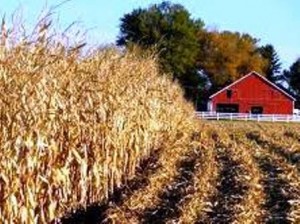 assurance that everything is on track; “elephant’s eye” corn isn’t expected until late September; most harvesting happens in October and sometimes into November. Then there’s a lot of harvesting going on; in 2012 Iowa corn farmers grew almost 1.88 billion bushels of corn, on 13.7 million acres of land; 2013 projections indicate 2.45 billion bushels on 13.97 million acres. Iowa has produced the largest corn crop of any state for more than two decades; in an average year, Iowa produces more corn than most countries! And it’s been the dominant
assurance that everything is on track; “elephant’s eye” corn isn’t expected until late September; most harvesting happens in October and sometimes into November. Then there’s a lot of harvesting going on; in 2012 Iowa corn farmers grew almost 1.88 billion bushels of corn, on 13.7 million acres of land; 2013 projections indicate 2.45 billion bushels on 13.97 million acres. Iowa has produced the largest corn crop of any state for more than two decades; in an average year, Iowa produces more corn than most countries! And it’s been the dominant 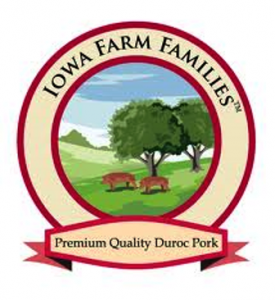 crop in Iowa for more than 150 years. The reasons are simple – a growing season that is long enough and warm enough, ample rain, and deep, rich soil. Iowa also produces livestock whose waste includes nutrients that are key to fertilizing the fields for better corn production. According to Iowa Agriculture farm statistics, in 2012 there were 195,000 sheep and lambs on hand, 3.9 million cattle and calves, and 20 million hogs. And, by the way, Iowa is the number one pork producing state in the country too. » read more
crop in Iowa for more than 150 years. The reasons are simple – a growing season that is long enough and warm enough, ample rain, and deep, rich soil. Iowa also produces livestock whose waste includes nutrients that are key to fertilizing the fields for better corn production. According to Iowa Agriculture farm statistics, in 2012 there were 195,000 sheep and lambs on hand, 3.9 million cattle and calves, and 20 million hogs. And, by the way, Iowa is the number one pork producing state in the country too. » read more
» posted on Saturday, June 29th, 2013 by Linda Lou Burton
Attracted To Des Moines
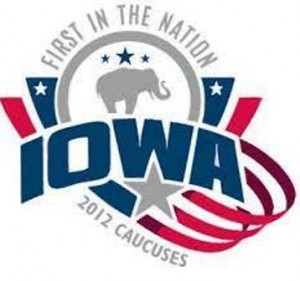 Linda Burton posting from Des Moines, Iowa – When you decide to run for President, where do you go first? Hint: Des Moines, Iowa. Iowa caucuses have been the first major electoral event in nominating the President of the United States since 1972; presidential candidates tend to set up headquarters in Des Moines early on. But politics isn’t the only reason people are attracted to Des Moines; it’s a major center for the insurance industry too; called the #1 spot for US insurance companies, and dubbed the third largest insurance capital of the world. Forbes magazine ranked Des Moines the Best Place for Business in 2010, and #1 in America’s Best Cities for Young Professionals in 2011. Do the names Principal Financial Group, Aviva Insurance, the Meredith Corporation, Ruan Transportation, EMC
Linda Burton posting from Des Moines, Iowa – When you decide to run for President, where do you go first? Hint: Des Moines, Iowa. Iowa caucuses have been the first major electoral event in nominating the President of the United States since 1972; presidential candidates tend to set up headquarters in Des Moines early on. But politics isn’t the only reason people are attracted to Des Moines; it’s a major center for the insurance industry too; called the #1 spot for US insurance companies, and dubbed the third largest insurance capital of the world. Forbes magazine ranked Des Moines the Best Place for Business in 2010, and #1 in America’s Best Cities for Young Professionals in 2011. Do the names Principal Financial Group, Aviva Insurance, the Meredith Corporation, Ruan Transportation, EMC  Insurance Company, and Wellmark Blue Cross Blue Shield ring a bell? They are headquartered in Des Moines. How did this up-and-going city get its start, and where did it get its name? Who got here first? The city was incorporated as Fort Des Moines September 21, 1851, so named because there was a fort here at one time. The word “Fort” was dropped in 1857 and it’s been Des Moines ever since; as for the fort, it was abandoned in 1846 but was the core from which the city grew. Its exact location was lost over time as flood deposits from the Des Moines
Insurance Company, and Wellmark Blue Cross Blue Shield ring a bell? They are headquartered in Des Moines. How did this up-and-going city get its start, and where did it get its name? Who got here first? The city was incorporated as Fort Des Moines September 21, 1851, so named because there was a fort here at one time. The word “Fort” was dropped in 1857 and it’s been Des Moines ever since; as for the fort, it was abandoned in 1846 but was the core from which the city grew. Its exact location was lost over time as flood deposits from the Des Moines  River covered it over, but recently discovered remains are now being excavated. At Site 13PK61, the Office of the State Archaeologist is methodically unearthing foundations, fireplaces, tools, and food debris left by the fort’s occupants and the residents of the early town of Fort Des Moines, as well as earlier Indian people that may have lived in the area. Which brings me to the prehistoric villages. » read more
River covered it over, but recently discovered remains are now being excavated. At Site 13PK61, the Office of the State Archaeologist is methodically unearthing foundations, fireplaces, tools, and food debris left by the fort’s occupants and the residents of the early town of Fort Des Moines, as well as earlier Indian people that may have lived in the area. Which brings me to the prehistoric villages. » read more
» posted on Thursday, June 27th, 2013 by Linda Lou Burton
Catching On
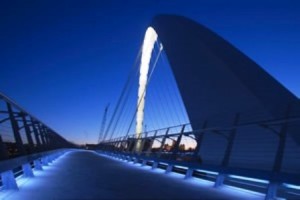 Linda Burton posting from Des Moines, Iowa – We try to avoid catching a cold, but we are happy when we catch a fish. We say to a friend “I’ll catch you later,” and here in Des Moines, the catch-phrase of the year seems to be “catching” every thing good there is in town. As I thumbed through the “Official Guide” for spring/summer 2013, a publication of the Visitors Bureau, I started to get the idea. Catch A River View, for instance. Des Moines has two rivers downtown, the Des Moines and the Raccoon, and the city apparently takes full advantage of what that means. Like the Principal Riverwalk, a system featuring lighted, landscaped public spaces, world-class public
Linda Burton posting from Des Moines, Iowa – We try to avoid catching a cold, but we are happy when we catch a fish. We say to a friend “I’ll catch you later,” and here in Des Moines, the catch-phrase of the year seems to be “catching” every thing good there is in town. As I thumbed through the “Official Guide” for spring/summer 2013, a publication of the Visitors Bureau, I started to get the idea. Catch A River View, for instance. Des Moines has two rivers downtown, the Des Moines and the Raccoon, and the city apparently takes full advantage of what that means. Like the Principal Riverwalk, a system featuring lighted, landscaped public spaces, world-class public  art, and unique pedestrian bridges and pathways that connect 300 miles of Central Iowa trails. At the north end is the “Iowa Women of Achievement Bridge,” a stunning arched span with two separate pathways – one for walkers and joggers, and one for bicyclists. To the south is the now-people-friendly Union Railroad Bridge, repainted its original “caboose red,” with cantilevers on either side allowing pedestrians to stop and “catch” the view. In between, both sides of the river offer destination points: the Brenton Skating Plaza with winter skating and summer events; the Long Look Garden with formal landscaping and a grand staircase; the Hansen Triangle with bronze sculpture and fountain; the Hub Spot, The
art, and unique pedestrian bridges and pathways that connect 300 miles of Central Iowa trails. At the north end is the “Iowa Women of Achievement Bridge,” a stunning arched span with two separate pathways – one for walkers and joggers, and one for bicyclists. To the south is the now-people-friendly Union Railroad Bridge, repainted its original “caboose red,” with cantilevers on either side allowing pedestrians to stop and “catch” the view. In between, both sides of the river offer destination points: the Brenton Skating Plaza with winter skating and summer events; the Long Look Garden with formal landscaping and a grand staircase; the Hansen Triangle with bronze sculpture and fountain; the Hub Spot, The  Promenade, and various waterfront trails. The Guide goes on to list other “catches” of Des Moines – from arts to action; even lazy things to do. I started a list of events to catch while I’m here and bingo, right off the bat I found the 15th Annual Arts Festival, coming up this weekend at Western Gateway Park. Painting, photography, sculpture, metalwork, music, kid’s crafts, food, and about 200,000 people. Wow. » read more
Promenade, and various waterfront trails. The Guide goes on to list other “catches” of Des Moines – from arts to action; even lazy things to do. I started a list of events to catch while I’m here and bingo, right off the bat I found the 15th Annual Arts Festival, coming up this weekend at Western Gateway Park. Painting, photography, sculpture, metalwork, music, kid’s crafts, food, and about 200,000 people. Wow. » read more
» posted on Tuesday, June 25th, 2013 by Linda Lou Burton
Windmills Of My Mind
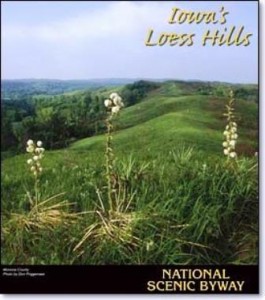 Linda Burton posting from Des Moines, Iowa – A thunderclap knocked me out of bed; a 9 on a scale of 10. Lincoln had stormed me in; Lincoln was storming me out. But it rapidly moved east; by the time I dressed it was starting to clear. The cats were the fourth load; the sun came out and the humidity came up; I turned the cooler on and set the GPS for Des Moines. A mile to the freeway; I-80 East was all I had to remember today. Cross the Platte River, edge around Omaha, cross the Missouri River, and the Journey entered its 35th state. The minute I crossed the line the landscape changed. I entered the Loess Hills of western Iowa, a unique land formation adjacent to the Missouri River Valley. Though deposits of “loess” are found around the world, nowhere else but in
Linda Burton posting from Des Moines, Iowa – A thunderclap knocked me out of bed; a 9 on a scale of 10. Lincoln had stormed me in; Lincoln was storming me out. But it rapidly moved east; by the time I dressed it was starting to clear. The cats were the fourth load; the sun came out and the humidity came up; I turned the cooler on and set the GPS for Des Moines. A mile to the freeway; I-80 East was all I had to remember today. Cross the Platte River, edge around Omaha, cross the Missouri River, and the Journey entered its 35th state. The minute I crossed the line the landscape changed. I entered the Loess Hills of western Iowa, a unique land formation adjacent to the Missouri River Valley. Though deposits of “loess” are found around the world, nowhere else but in  China are areas of windblown silt higher than in Iowa. The Loess Hills encompasses over 640,000 acres of land; 10,000 acres are designated “Loess Hills National Natural Landmark.” People flock to visit the outstanding prairie-and-forest-covered bluffs and the archaeologically rich hills; in 2008 the State Archaeologist recorded over 1,500 inventoried sites. I stopped at the Iowa Welcome Center about 20 miles in; a marker there told of historic Council Bluffs, so named for an 1804 meeting of the Lewis and Clark Expedition with the Otoe Tribe. The Missouri and the Platte,
China are areas of windblown silt higher than in Iowa. The Loess Hills encompasses over 640,000 acres of land; 10,000 acres are designated “Loess Hills National Natural Landmark.” People flock to visit the outstanding prairie-and-forest-covered bluffs and the archaeologically rich hills; in 2008 the State Archaeologist recorded over 1,500 inventoried sites. I stopped at the Iowa Welcome Center about 20 miles in; a marker there told of historic Council Bluffs, so named for an 1804 meeting of the Lewis and Clark Expedition with the Otoe Tribe. The Missouri and the Platte, 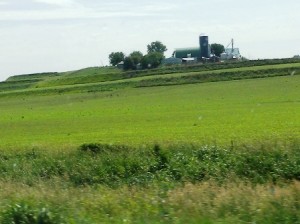 so significant to explorers and settlers in the westward movement. Back on the road, bright green slopes began to fill my view, different from the farms I’d seen in Kansas and Nebraska. They were terraced farms; gentle contours edged with grasses in between the crops. And then, a truck whizzed by, hauling a giant blade. A blade for a wind turbine? Wind farms in Iowa? » read more
so significant to explorers and settlers in the westward movement. Back on the road, bright green slopes began to fill my view, different from the farms I’d seen in Kansas and Nebraska. They were terraced farms; gentle contours edged with grasses in between the crops. And then, a truck whizzed by, hauling a giant blade. A blade for a wind turbine? Wind farms in Iowa? » read more
